|
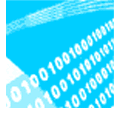 THE BOOK AS interface, the changing interface of collected thought... what is the future of the book? With the computer revolution fast fulfilling its promise to make society rethink the book, it is time for a good long look at the book.
THE BOOK AS interface, the changing interface of collected thought... what is the future of the book? With the computer revolution fast fulfilling its promise to make society rethink the book, it is time for a good long look at the book.
 The Future of Book of the Future is an exploration and visualization of the book by artists, writers, thinkers, historians, and history makers. The subject is not whether books have a future, but what new forms they will take. How will the future book continue to manifest creativity and disseminate knowledge? Gail Rubini and Conrad Gleber have canvassed writers, and historians as well as the art world for individual interpretations of the book throughout history and for posterity. The resulting project examines the many faceted ideas of the book and its contributions in culture and knowledge. The Future of the Book of the Future attempts to discuss whether generations to come will continue to recognize the book as the interface of collected thought and the catalyst for cultural change or regard it after the turn of this century as a quaint, yellowing dinosaur. The Future of Book of the Future is an exploration and visualization of the book by artists, writers, thinkers, historians, and history makers. The subject is not whether books have a future, but what new forms they will take. How will the future book continue to manifest creativity and disseminate knowledge? Gail Rubini and Conrad Gleber have canvassed writers, and historians as well as the art world for individual interpretations of the book throughout history and for posterity. The resulting project examines the many faceted ideas of the book and its contributions in culture and knowledge. The Future of the Book of the Future attempts to discuss whether generations to come will continue to recognize the book as the interface of collected thought and the catalyst for cultural change or regard it after the turn of this century as a quaint, yellowing dinosaur.
 Books have traditionally been the way a society could preserve ideas that go beyond personalities. The use of ink on paper and written and illustrated work have been the standard for centuries. Books have a concrete presence about them that differs from the fluid character of electronic information storage and its capacity to timelessly alter its information. The potential for a new and unique media has been technically feasible, but like all technical innovations, will it live up to its potential? Books have traditionally been the way a society could preserve ideas that go beyond personalities. The use of ink on paper and written and illustrated work have been the standard for centuries. Books have a concrete presence about them that differs from the fluid character of electronic information storage and its capacity to timelessly alter its information. The potential for a new and unique media has been technically feasible, but like all technical innovations, will it live up to its potential?
 Will the book be threatened by new developments in electronic communication or manage to hold onto the noble status that even the most vehement technophile -- and most of the rest of us -- agree it deserves? Will the book be threatened by new developments in electronic communication or manage to hold onto the noble status that even the most vehement technophile -- and most of the rest of us -- agree it deserves?
 The Future of the Book of the Future project was developed as a work-in-progress series of exhibitions and publications. We began by concentrating on rapid changes in technology and the evolution of an infosphere. The exhibition travels the globe not as a package of preselected articles and artworks, but as a question and open discussion arena. The content was originally intended to highlight technological and artistic material that is relevant and intriguing to anyone interested in the book. It has become a discussion and close look at how the new media landscape will empower completely new messages, connections and collaborations. The Future of the Book of the Future project was developed as a work-in-progress series of exhibitions and publications. We began by concentrating on rapid changes in technology and the evolution of an infosphere. The exhibition travels the globe not as a package of preselected articles and artworks, but as a question and open discussion arena. The content was originally intended to highlight technological and artistic material that is relevant and intriguing to anyone interested in the book. It has become a discussion and close look at how the new media landscape will empower completely new messages, connections and collaborations.
 The exploration is divided into three conceptual frames: Timeline, Writings, and Gallery. The exploration is divided into three conceptual frames: Timeline, Writings, and Gallery.
|
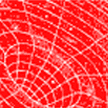 |
|
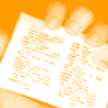
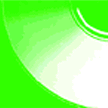
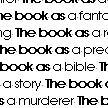
 THE BOOK AS interface, the changing interface of collected thought... what is the future of the book? With the computer revolution fast fulfilling its promise to make society rethink the book, it is time for a good long look at the book.
THE BOOK AS interface, the changing interface of collected thought... what is the future of the book? With the computer revolution fast fulfilling its promise to make society rethink the book, it is time for a good long look at the book.
 The Future of Book of the Future is an exploration and visualization of the book by artists, writers, thinkers, historians, and history makers. The subject is not whether books have a future, but what new forms they will take. How will the future book continue to manifest creativity and disseminate knowledge? Gail Rubini and Conrad Gleber have canvassed writers, and historians as well as the art world for individual interpretations of the book throughout history and for posterity. The resulting project examines the many faceted ideas of the book and its contributions in culture and knowledge. The Future of the Book of the Future attempts to discuss whether generations to come will continue to recognize the book as the interface of collected thought and the catalyst for cultural change or regard it after the turn of this century as a quaint, yellowing dinosaur.
The Future of Book of the Future is an exploration and visualization of the book by artists, writers, thinkers, historians, and history makers. The subject is not whether books have a future, but what new forms they will take. How will the future book continue to manifest creativity and disseminate knowledge? Gail Rubini and Conrad Gleber have canvassed writers, and historians as well as the art world for individual interpretations of the book throughout history and for posterity. The resulting project examines the many faceted ideas of the book and its contributions in culture and knowledge. The Future of the Book of the Future attempts to discuss whether generations to come will continue to recognize the book as the interface of collected thought and the catalyst for cultural change or regard it after the turn of this century as a quaint, yellowing dinosaur.
 Books have traditionally been the way a society could preserve ideas that go beyond personalities. The use of ink on paper and written and illustrated work have been the standard for centuries. Books have a concrete presence about them that differs from the fluid character of electronic information storage and its capacity to timelessly alter its information. The potential for a new and unique media has been technically feasible, but like all technical innovations, will it live up to its potential?
Books have traditionally been the way a society could preserve ideas that go beyond personalities. The use of ink on paper and written and illustrated work have been the standard for centuries. Books have a concrete presence about them that differs from the fluid character of electronic information storage and its capacity to timelessly alter its information. The potential for a new and unique media has been technically feasible, but like all technical innovations, will it live up to its potential?
 Will the book be threatened by new developments in electronic communication or manage to hold onto the noble status that even the most vehement technophile -- and most of the rest of us -- agree it deserves?
Will the book be threatened by new developments in electronic communication or manage to hold onto the noble status that even the most vehement technophile -- and most of the rest of us -- agree it deserves?
 The Future of the Book of the Future project was developed as a work-in-progress series of exhibitions and publications. We began by concentrating on rapid changes in technology and the evolution of an infosphere. The exhibition travels the globe not as a package of preselected articles and artworks, but as a question and open discussion arena. The content was originally intended to highlight technological and artistic material that is relevant and intriguing to anyone interested in the book. It has become a discussion and close look at how the new media landscape will empower completely new messages, connections and collaborations.
The Future of the Book of the Future project was developed as a work-in-progress series of exhibitions and publications. We began by concentrating on rapid changes in technology and the evolution of an infosphere. The exhibition travels the globe not as a package of preselected articles and artworks, but as a question and open discussion arena. The content was originally intended to highlight technological and artistic material that is relevant and intriguing to anyone interested in the book. It has become a discussion and close look at how the new media landscape will empower completely new messages, connections and collaborations.
 The exploration is divided into three conceptual frames: Timeline, Writings, and Gallery.
The exploration is divided into three conceptual frames: Timeline, Writings, and Gallery.
